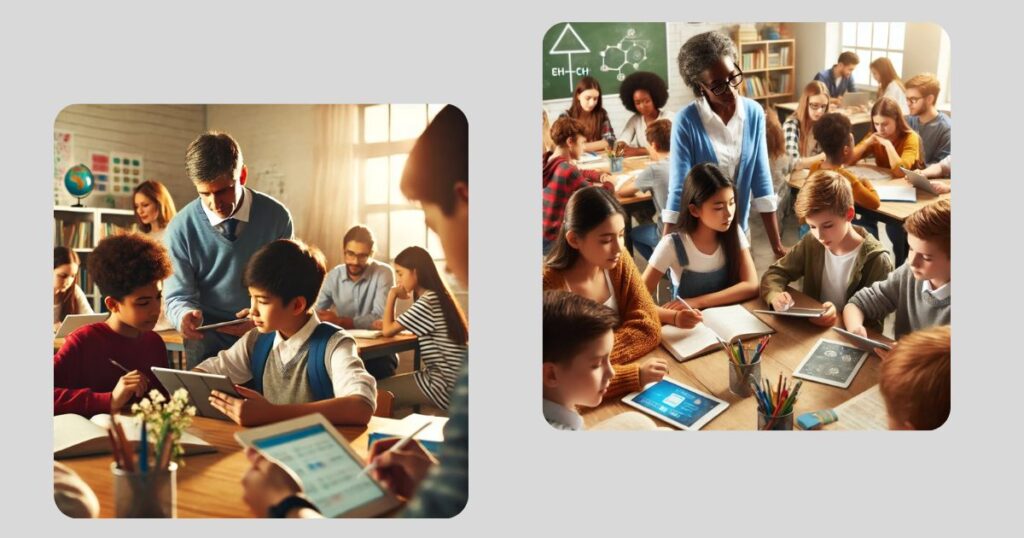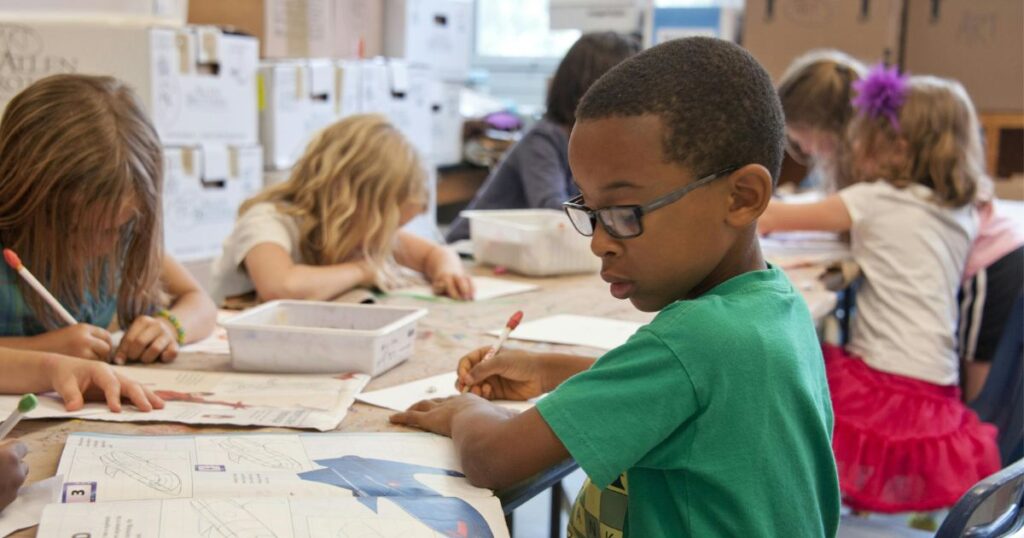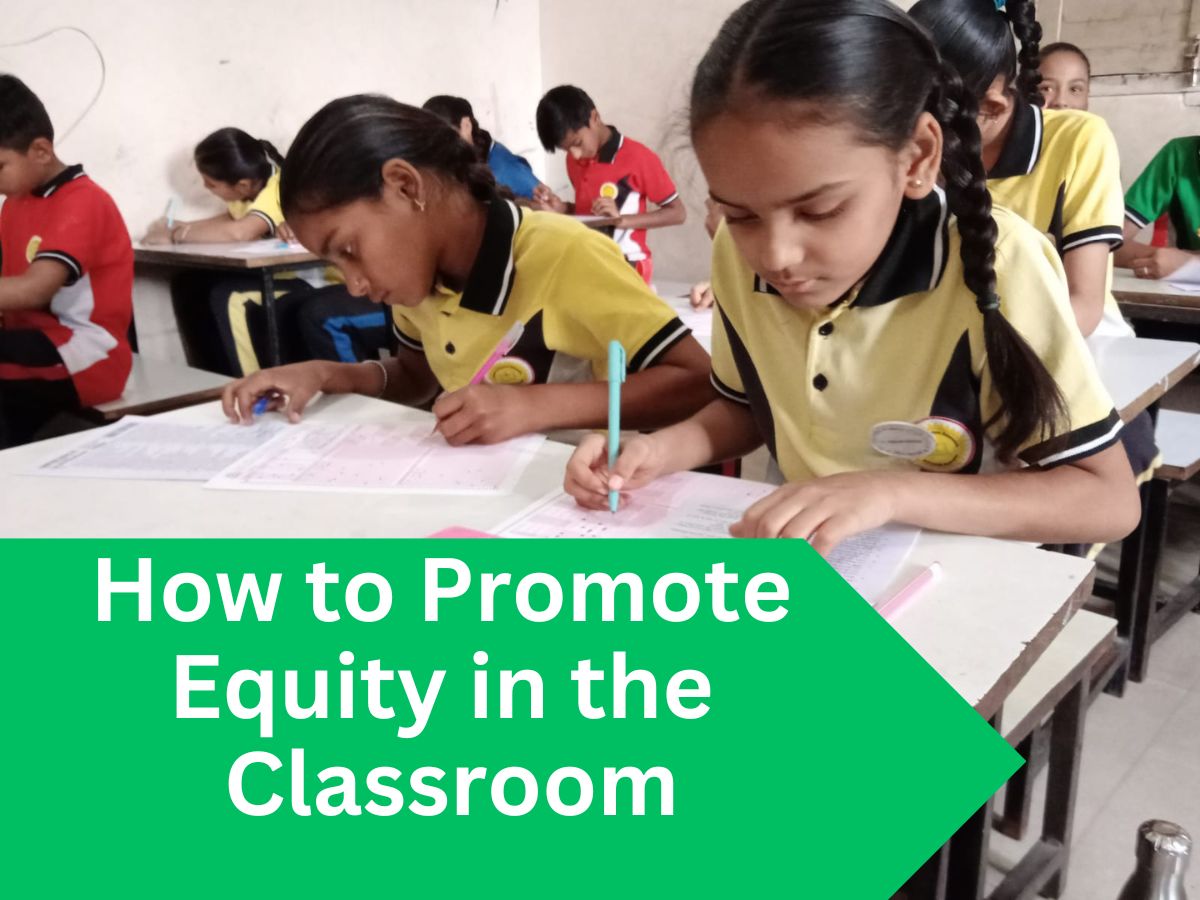Equality vs. Equity in Education
We frequently confuse the terms ‘equality’ and ‘equity,’ but they are not synonymous. Equality entails treating all students equally. Making sure that every student has the resources they need to succeed in school is what equity entails. Every child has an equal chance of success in the classroom. Equity in the classroom means that every student, regardless of race, socioeconomic status, identity, or background has equal access to a high-quality education. It must occur for all students to learn and thrive in the classroom.
What is Equity in the Classroom
In the classroom, equity refers to providing equal and just opportunities for all students, regardless of their backgrounds, talents, or identities. It entails providing a welcoming learning atmosphere. It identifies and accommodates various needs while also promoting equal access to resources and removing any systemic impediments to individual success. Equity is concerned with eliminating achievement gaps and assisting marginalized pupils in reaching their full potential. Teachers can play an important role in promoting equity in the classroom. They can employ culturally sensitive teaching methods, a variety of instructional methods, and individualized support. Classrooms become powerful settings that cultivate each student’s unique skills and build a sense of belonging and achievement for everyone by stressing equity.
Importance of Equity in the Classroom

Equity in the classroom is critical because it ensures that all students have an equal chance to develop and achieve academically and emotionally. Educators address the different needs and backgrounds of students by encouraging equity, resulting in an inclusive learning environment in which everyone feels valued and respected. This increases belonging, closes achievement gaps, and improves overall academic success. Furthermore, equality trains students to be compassionate and empathic. Adopting equity in education benefits not just individual students, but also lays the way for a more just and equitable future for all.
Challenges of Creating an Equitable Classroom

Creating or maintaining an equitable learning environment in a classroom is a difficult task for any educator. It entails numerous practices and strategies. In this article, we will look at some strategies that teachers can use to promote equity in the classroom. I am hopeful that these strategies will help to create an equitable learning environment in the classroom for all students. It will provide equal opportunities to learn and grow.
Strategies to Promote Equity in the Classroom
1. Establish a culture of understanding.
- It is instrumental for student success and development, both academic and personal, to establish a learning environment in which every pupil feels protected, respected, and of value. Creating an inclusion party that encourages students to involve themselves in learning and do their best work.
- To create an inclusive atmosphere, educators should engage in open communication and the embracing of diversity to ensure all students feel heard and valued. In creating a safety climate, students will feel safe both physically, mentally, and socially in the classroom. Climate in a supportive way to allow for participation and risk-taking in the learning environment.
- Discussing diversity, equity, and inclusion should teach students about the multiplicity of perspectives and experiences that exist in the world. Model respectful behavior and create a classroom climate that makes being kind and considerate of each other second nature.
- Use integrated culturally responsive teaching within your lessons whereby varied cultural perspectives, traditions, and divergent learning styles are embedded within your classroom, thereby allowing all students to feel included and represented.
- When there are cultural celebrations, highlight the different traditions, practices, and/or accomplishments of students from different backgrounds to create a feeling of inclusivity. Contrarily, interrupt discriminatory acts and teach students to think critically about fairness and equality.
This will be understood in its broader sense: a culture of understanding provides every individual with the space that allows us all to learn, grow, and live with confidence..
2. Make use of technology to advance equity.
Technology plays a very important role in promoting equity in the classroom through equal access to resources, materials, and learning opportunities. It helps in bridging gaps in education through digital tools that attend to various learning needs, thereby allowing every student to excel irrespective of their background, location, or learning style. This includes equal access to learning resources, personalized learning, assistive technology for inclusive learning, data-driven instruction, and remote and hybrid learning.
Ways in which technology supports equity in education include:
- By availing such resources with ease, digital textbooks, online libraries, and e-learning platforms ensure that all students have equal access to high-quality learning materials, putting an end to disparities that resulted from financial or geographical hindrances.
- Adaptive learning software and artificial intelligence tools allow the instructor to customize the instruction of the lessons per individual student need, with each student given the opportunity to learn at their own rate. These include screen readers, voice-to-text software, or subtitles so that students with disabilities may engage in learning more effectively.
- Learning management systems and analytics tools help educators track student progress, finding the gaps in learning to provide timely interventions. In an online learning platform, students continue their education using online tools, lifting physical and economic barriers to ensure learning continuity.
When used effectively, with technology, teachers will be in a position to create an inclusive and equitable learning environment where each student has an opportunity to succeed.
3. Teach social skills to promote social skill
Teaching social skills is fundamental for creating an equitable and inclusive environment in the classroom. When students receive proper training in communication, collaboration, and problem-solving, they will be better able to build healthy relationships and cooperate during class activities, which are reflected in their profound effects through mutual respect, empathy, and cooperation, thus creating a harmonious learning setting where every student feels included and important.
Some strategies for teaching social skills for equity are:
- To foster effective communication, be clear in expressing points, let students listen beyond explanations, and respect others’ opinions. Communication activities apply best through class discussions and group tasks.
- To foster collaboration, give the students group projects or peer-learning activities so they can work as a team. They start appreciating different viewpoints their companions may have while depending on different strengths and skills of one another.
- Giving the students skills on conflict resolution-By doing this, the students should have some alternatives they can seek when they resolve their disagreements. Students should learn how to negotiate, how to compromise, and how to be in the other’s shoes, enabling a more respectful environment for learning. As an example for modeling, model desired inclusive behavior by dealing with all students equitably and providing support to urge them to do the same with their peers.
- Apply up-scaled role-play through social scenarios—better yet, engage the students where they enter real-life scenarios, helping them gain their cooperative insight in a drilled-up setting.
By embedding social skills into daily lessons, teachers can shape an equal classroom by also allowing students to know virtues of teamwork, respect, and inclusion.

4. Recognize that each student has unique needs.
Every student has his or her own different set of strengths, weaknesses, styles of learning, and backgrounds. Recognizing these differences and celebrating them is essential to providing an equitable learning environment.
When teachers recognize that every student has his or her own preferred ways of learning, they can employ differentiation in order to make sure that each student grows and succeeds individually.
Ways to support the unique needs of students:
- Differentiate instruction—Use a mixture of different ways for teaching, including visual, auditory, or hands-on learning situations, in order to approach students with different learning preferences.
- Offer personalized support—After assessment of individual students’ needs, offer extra help or enrichment activities to ensure every child is challenged at their own level.
- Create an Inclusive Classroom Environment— Celebrate diversity by guiding students to acknowledge their differences and, in turn, allow them to become appreciated and accepted.
- Give student voice and choice—give students the chance to share their ideas, choose among different assignments, and take responsibility for their own education; this will work wonders in engaging students.
- Use formative assessments—periodic checkups that are brief and regular, such as quizzes, class discussion, and project work should indicate areas where a student is having difficulty in order to offer stronger support.
By acknowledging that every student is different, and, therefore, differentiated teaching opportunities can be built, so can the learning environment that cultivates an air in the classroom wherein all students feel seen, aided, and will, in the end, take the responsibility of empowerment towards success.
5. Collaborative Learning
Collaborative learning is a very effective means of engaging students to work together, share ideas, and support one another in learning. In-action discussions in small group activities help students nurture teamwork, communication, and problem-solving skills important for success in academics and real life. It promotes equality since all students are given an opportunity to express their thoughts on a given subject, regardless of their background or learning ability.
Some of the numerous benefits of collaborative learning include the following.
- Provides Engaged Learning—There is a much higher likelihood of student participation in group discussions, questioning, and general sharing of thought with fellow partners in small groups.
- Group Peer Support—Each student is responsible not only for their own learning but also for helping their peers understand the material. This creates a sense of shared responsibility and cooperation.
- Helps Create Critical Thinking Skills—Through various group discussion and problem-solving activities, students learn how to analyze different perspectives in an articulate and reasonable manner.
- Gains Social and Communication Skills—Group work equips students to actively listen, express their opinions clearly, and collaborate inclusively.
- Fosters Inclusiveness—All students, including those who may be shy or hesitant, are each assured of an opportunity to speak within themselves, thus promoting inclusiveness through collaborative activities.
Using collaborative learning can make teachers include all kinds of students in the same classroom and engage them to give what they know through working together for a common goal.
You may like to read:- Diversity in the Classroom | How to Foster Inclusion?
Motivational Factors in Learning: How to Inspire Student Success
Building a Better Classroom with Teacher’s Skills
Constructive Learning and its Role in Skill Development
- How to Dominate Your Online Business With 5 Proven Digital Marketing Strategies
- How to Cultivate Critical Thinking and Problem-Solving Skills in Classroom
- Top Proven Mental Health Strategies for Schools in 2025-26
- Time Management for Teachers: How to Plan, Prioritize, and Perform Better
- How Parental Involvement in Education Shapes a Child’s Growth and Success
Conclusion
Teachers have a responsibility to ensure equity for every student in the classroom so that each student receives the best chance to succeed. Creating access, responding to a learner’s needs, and eradicating loopholes in the system ensures more learners succeed. It looks at the organization of the classroom so that instead of social studies being a place where students feel discriminated against, a place where children cannot learn, teachers look at diversity as a strength, where each child counts and gets the respect that they deserve by being able to achieve their potential best. This approach not only helps to eliminate achievement gaps but also creates compulsory and emotionally intelligent persons ready to build a better culture. Educators who have adopted equitable processes are putting their resources to some productive use by helping each learner with the future that they wish to witness.
FAQ
1. What is the difference between equality and equity in education?
Equality of education means that each student should be given the same attention, the same support and the same facilities in class while equity involves ensuring that each student requires is given what he or she requires in order to succeed. Equity seeks to deal with disparities because of each learner’s characteristics, historical background, and capability to support a fair angle in learning.
2. Why is equity important in the classroom?
Equity in the classroom is important as it allows every child in class an equal opportunity to fully maximize his/her potential. In a practical state, it is bent toward equity in the classroom ensures the gaps of achievements, and empowers students’ belongingness so that every learner will feel accepted to be treated in the classroom. This results in improved academic, social, emotional, and academic success for all enrollees.
3. How can teachers promote equity in their classrooms?
Equity is scaffolding from teachers: TP, through culturally sensitive teaching approaches, accommodating instruction, and differentiation according to the student’s needs. Besides, involving students in collaborative learning, teaching them certain social skills, and using technology to make the learning process more individual, also contribute to a fair environment in the class where each student will have the same successful outcomes.
4. What are some challenges to achieving equity in the classroom?
The issues that may lead to inequity include; how to deal with student characteristics, scarce resources and stakeholders’ prejudices that might be in the school system without knowing. Furthermore, the general integration of differentiated instruction for every learner entails considerable time, staff development and effective monitoring to ascertain whether the needs of every learner are being fulfilled adequately.
5. How does equity in the classroom impact students’ futures?
Diversity in classroom practice teaches students about equity and tolerance because they also learn to embrace other people in their fellow society members. Fair education opens doors to learners and by helping them to self-achieve academically and socially, educators promote the worth of the learners. An equitable learning environment also prepares learners to deal with a fair, inclusive, learning environment at school and in other places.



